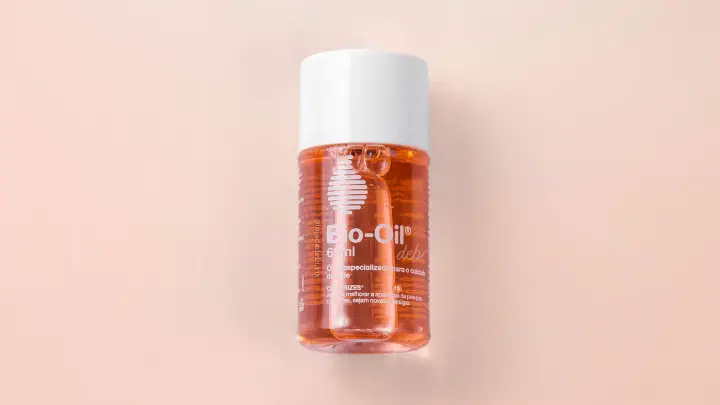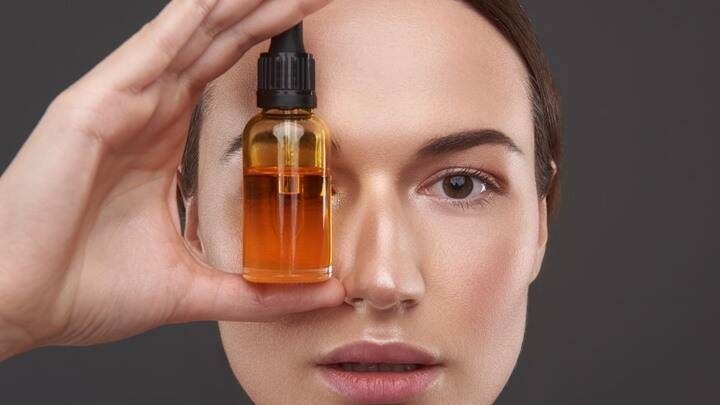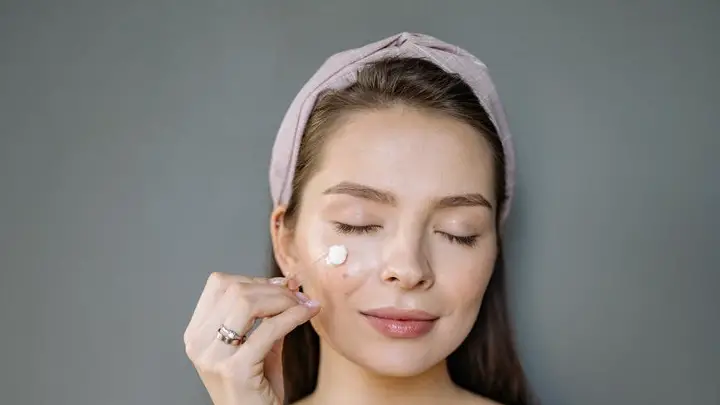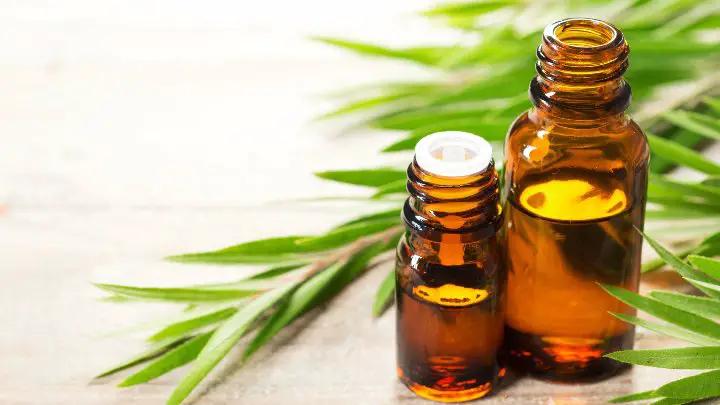Hyaluronic acid and niacinamide are two of the most effective skin-care ingredients in the market, and they’re also naturally occurring substances in our bodies.
As we age, however, levels of these two ingredients decrease, and wrinkles begin to appear. The good news: replenishing them can help fight signs of aging and keep your skin looking smooth and radiant.
This article discusses hyaluronic acid and niacinamide, what they do and how they work. I’ll also explain their potential side effects, and how to add both to your skincare regimen. Read on to find out.
What Is Hyaluronic Acid?
Hyaluronic acid, or HA for short, is a natural molecule that is found in the body and helps give skin its elasticity. It’s mostly found in the skin, eyes, and joints (where it helps keep them plump and hydrated).
You can find hyaluronic acid in some of your favorite foods (like fruits and leafy greens). However, the amount is so low that you’ll probably have to get it from a supplement or skincare product to see any major benefits.
As a supplement or skincare ingredient, HA helps reduce the appearance of skin conditions caused by dehydration in the skin. The acid can also attract water to itself, which makes it useful for moisturizing the skin.
This is why manufacturers often use it as an ingredient in skincare products like anti-aging creams, soaps, and lotions to help treat everything from wrinkles and eczema to acne and hyperpigmentation.
What Are the Benefits of Using Hyaluronic Acid?
Reduces wrinkles
As you age, your body loses its ability to produce hyaluronic acid on its own, which can result in dry, wrinkled-looking skin. By using anti-aging products that contain this ingredient, you can improve the appearance of your skin and reduce those wrinkles.
Increases hydration levels
The moisturizing properties of hyaluronic acid help prevent water loss from occurring within your body. For individuals who suffer from dry skin or other conditions related to skin dehydration, this property of hyaluronic acid may be very beneficial.
Relieves joint pain
According to the National Library of Medicine, hyaluronic acid can help relieve joint pain and stiffness, as well as aid in wound healing when taken orally.
This can be especially helpful for people with osteoarthritis, rheumatoid arthritis, or other conditions that cause joint pain and inflammation.
Side Effects of Using Hyaluronic Acid
Hyaluronic acid can cause a harmless rash in some people. Severe or persistent rashes may be signs of an allergic reaction to this ingredient.
If you develop a rash after using HA, seek medical attention right away. Stop using the product and contact your doctor as soon as possible if your rash worsens with time.
HA supplements can also cause dizziness, headaches, and stomach pain in some people. If you experience these symptoms after taking HA, contact your doctor to discuss possible treatment options.
Your doctor may recommend that you stop taking the supplement until your symptoms resolve or take smaller doses.
Drug Interactions
As with most medications, there is a chance that hyaluronic acid supplements could interact harmfully with certain medications and supplements.
Tell your doctor about all prescription and over-the-counter medications and supplements that you are taking before using HA supplements.
For example, HA can interact with prescription drugs such as aspirin or other anti-inflammatory medications such as Advil or Motrin.
According to Drugs.com, this interaction can increase the likelihood of suffering from the side effects of these drugs.
What Is Niacinamide?
Niacinamide, also known as nicotinamide, is an active form of vitamin B3; it is a water-soluble vitamin that works with other substances in your skin to help improve the appearance of enlarged pores, wrinkles, and other skin conditions.
You can find niacinamide in supplements and many foods, including meat, fish, milk, eggs, green vegetables, and cereal grains. You can also find it in skincare products where it’s available in several forms and concentrations.
Niacinamide’s ability to improve skin’s barrier function makes it a popular ingredient for those with dry skin or skin conditions, like eczema.
In addition to strengthening the surface of the skin, niacinamide also reduces pore size, inflammation, and oil production, making it a popular ingredient for both oily and acne-prone skin.
What Are the Benefits of Using Niacinamide?
Improves skin barrier function
The skin barrier is our first line of defense against factors like pollution, UV rays, stress, and extreme temperatures. Niacinamide is essential to keep it healthy and functional to prevent water loss and dehydration.
Treats acne
Niacinamide reduces acne breakouts by unclogging pores, reducing oil production, and fighting inflammation. You can get even more benefits out of niacinamide by using it in combination with other ingredients known to increase its effectiveness.
Glycolic acid, lactic acid, and retinol all make fantastic combinations when you use them with niacinamide.
Boosts collagen production
While niacinamide isn’t a cure-all for aging, it can make skin look younger by increasing collagen production in skin cells.
As we age, collagen production decreases, causing our skin to wrinkle and sag more than it would if we had sufficient amounts of collagen available.
Protects against sun damage
This vitamin is a powerful antioxidant that protects the skin from environmental damage, including sun damage from UV rays and pollutants in the air.
Lightens hyperpigmentation spots
Niacinamide helps to even out skin tone by targeting dark spots or patches caused by discoloration of the skin. It can also help brighten your overall skin complexion by preventing melanin cells from reaching the surface of your skin.
Side Effects of Using Niacinamide
Niacinamide skincare products are generally considered safe for most people. However, some people might experience side effects when using them.
The main side effect of niacinamide is skin flushing, which might be more common in people who have rosacea. Flushing occurs when the blood vessels in your skin dilate, bringing more blood to the surface and turning your skin red.
This should disappear after a few days of use, but if it doesn’t or becomes more severe, stop using the product and consult your dermatologist.
Niacinamide may also cause mild redness, itching, or burning when first applied to the skin. These side effects usually go away as your skin adjusts to niacinamide.
In rare cases, niacinamide can cause severe allergic reactions. If you have an allergy to niacinamide or any other ingredient in a product you’re using, stop using the product and consult your doctor immediately.
Drug Interactions
It is not recommended to take niacinamide supplements with cholesterol-lowering medications called statins. Niacinamide can increase the risk of a muscle-weakening condition, myopathy, which causes muscle pain and weakness.
There are no current guidelines for the safe use of niacinamide in people with impaired liver function. However, if you’re taking any liver medications, avoid using niacinamide unless your health care provider tells you otherwise.
Can You Use Hyaluronic Acid With Niacinamide?
Absolutely. Hyaluronic acid and niacinamide are two of the most effective ingredients that you can use to get clearer, brighter, younger-looking skin. They work great alone, but they’re even better together.
HA holds up to 1,000 times its weight in water, so it is great for plumping up the skin, enhancing a youthful appearance, and improving the look of fine lines and wrinkles.
Niacinamide works differently and with different benefits. It improves enlarged pores, uneven skin tone, fine lines, dullness, and a weakened barrier.
By combining these two ingredients, you can improve the look of your skin while enhancing its elasticity and moisture content. This means fewer fine lines and wrinkles, smoother skin, and a more glowing, youthful complexion.
How to Use Hyaluronic Acid With Niacinamide
Use a combined product
Many products contain both ingredients to target common skincare concerns, such as aging, acne, dryness, and hyperpigmentation.
The concentration of each ingredient will vary depending on what type of product you choose. For example, a serum will have a higher concentration of both ingredients compared to a moisturizing lotion.
Layer both ingredients
Apply niacinamide first, then wait about 15-20 minutes for it to dry completely before applying hyaluronic acid. This allows the niacinamide to penetrate your skin completely first without being canceled out by the hyaluronic acid product you’re applying.
Apply at different times of the day
Niacinamide is likely to be more effective in the morning because it’s an antioxidant and you’re exposed to more pollution during the day. Hyaluronic, on the other hand, is better at night, because it provides moisture to your skin while you sleep.
For best results, experts recommend using a sunscreen of SPF 30 or higher every day. By protecting your skin from harmful UV rays, you can prevent premature signs of aging on your skin.
Benefits of Using Hyaluronic Acid With Niacinamide
Reducing wrinkles
One of the best things about HA is its ability to plump the skin, which is especially important for reducing the appearance of fine lines and wrinkles. Niacinamide helps prevent collagen breakdown and can reduce the appearance of large pores.
By combining these two proven ingredients, you get a powerful anti-aging duo that treats all the signs of aging skin.
Treating acne
Acne is caused by clogged pores induced by excess oil production. By increasing moisture in the skin, HA helps clear pores and reduce excess oil production.
Niacinamide also helps to control oil production while helping to reduce inflammation and redness. Combining the two will help treat acne issues such as pimples, whiteheads, blackheads, or enlarged pores.
Preventing sun damage
Both HA and niacinamide have sun-protective properties, which will help prevent further damage from occurring in conjunction with sunscreen use.
Increasing hydration
Hyaluronic acid and niacinamide are both moisturizing ingredients that help keep the skin plump and sufficiently hydrated. Together, these two ingredients work to keep your skin cells hydrated, plump, and youthful.
Treating hyperpigmentation
Niacinamide works by decreasing the production of melanin, while hyaluronic acid increases the amount of water in the skin cells, helping them retain moisture and plumpness.
Both ingredients help treat hyperpigmentation, thereby giving your skin a smoother, more even appearance.
FAQs
How can you get hyaluronic acid in your diet?
The best way to get hyaluronic acid in your diet is by eating a lot of fruits and vegetables that contain high amounts of this important nutrient.
Select foods like citrus fruits, cucumbers, broccoli, berries, eggplants, and potatoes. When you regularly eat these foods, you will have smooth, hydrated, and healthy-looking skin.
Can you use niacinamide in the morning?
Yes, you can. Niacinamide is an antioxidant, meaning it protects the skin from environmental damage like pollution, sun damage, and cigarette smoke. This makes it a perfect ingredient for your morning routine.
Other benefits of using niacinamide include improving skin elasticity, reducing inflammation, decreasing fine lines, and increasing skin moisture content.
Is hyaluronic acid good for dry skin?
Yes, it is. Hyaluronic acid draws water from the environment and binds it to skin cells, making it an effective moisturizer for dry skin.
It helps hold moisture within the skin, leading to a smoother appearance and feel. Because of this, you are less likely to experience dryness or fine lines when using products that contain hyaluronic acid.
Conclusion
When it comes down to it, a good skincare routine should include hyaluronic acid and niacinamide. They are two potent ingredients that can help with different skin concerns and leave you looking younger than ever.
You should choose the one that matches your skin type best, as well as your budget. Since both ingredients come at varying prices, it’s perfectly reasonable to choose one of them over the other.
But because they work together so smoothly and effectively, you can’t go wrong with using them both.
Thanks for reading.
Visit Serum101 if you want to learn more about the beneficial effects of these two ingredients.







